Nothing gets a spring turkey hunter’s blood pumping faster than hearing a symphony of gobbles ringing across the woods at first light. Sometimes the toughest decision at daylight is deciding which gobbler they want to go after. All too often these days, my tough choice at daylight is deciding whether or not to head back to the truck. The lack of vocal gobblers may be due to the large coyote population, or perhaps it is caused by increased hunting pressure from surrounding properties. All I know is, more often than not these days, I find myself standing on a ridge-top at first light listening to silence across the countryside.
The first step to successfully hunting uncooperative gobblers is to become confident in your hunting area. It is easier to be patient, and you will hunt longer if you know that there are mature gobblers on your property. The best way to find out for sure if the birds are there is to set out game cameras. It seems that just about everyone these days is using a trail camera or two to scope out their deer herd, but I rarely hear of anyone using them to scout turkey activity. However, I have found that turkeys can be more predictable and easier to pattern than deer.
There are three main areas I tend to place cameras in during the season. One obvious camera spot is in a green field or pasture. To narrow down your best field sites, look for tracks and droppings before you hang a camera. Fields and pastures serve two main functions for turkeys during the spring. For gobblers, they represent prime strutting areas. For hens, fields become a prime food source. The acorns that they had been feeding on in the fall and winter are gone. Now, they are feeding on the young grasses and bugs present in abundance in green fields and pastures.
Another good area in which to place a camera is in a strut zone along a roadway or other opening. Once again, scout the spot first before hanging a camera. Look for tracks and strut marks made in sandy areas from the gobbler’s wings dragging the ground. These strut zones are often the first place a gobbler goes to in the morning.
The other obvious choice for camera placement is near a known roosting area. Good roosting areas are often on field edges and ridge tops. Turkeys like to roost in an area that gives them a good vantage point to see from at first light. Look for droppings at the base of trees to identify exact roost locations. Often, the birds will fly a little distance to roost, so it is not likely you will find many tracks under the roosting trees. In order to get pictures, you will have to locate the spot where the birds gather before flying up to roost. Look for a concentration of tracks near the roosting area, and hang your camera there and set back with optics to see where these birds enter and leave the fields.
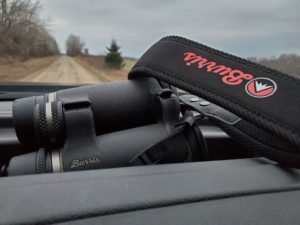
Use the pictures and time data you gather from your trail cameras to try and pattern your birds. Label your camera locations on a map of your hunting property with site keys such as roost, strut zone, feeding area, etc. Write the picture times next to the site keys, and see if a pattern starts to develop. Several years ago, I employed this technique to pattern a couple of quiet gobblers I kept getting pictures of and seeing in a large cut bean field. Once the birds were out in the large field, they were impossible to kill. However, I soon noticed they would alternate their roosting locations in a fairly predictable pattern around the field.
I was unable to try and roost them before my next morning hunt, but, because of the scouting I had done and the pattern I saw, I felt confident about my spot. Like stubborn toms do, they didn’t make a peep at daylight. However, I soon heard the unmistakable sound of turkeys flying down from their roost behind me, and within a few minutes I heard the crunching of leaves.
The first birds to appear were four hens that passed by me at 20 yards. The two gobblers behind them didn’t stand a chance, and I dropped the largest as he stepped into the field. Because of the game-camera scoutingand knowing their roosting habits I was able to set up at almost the exact spot where the turkeys entered the large field.
Sometimes cold weather or rain can cause gobblers to be silent. So how do you deal with Mother Nature? If the cold is keeping the birds silent, try one of the tactics I listed above. With any luck, they may become more vocal if it warms up later in the day. If it is raining, then you have a decision to make.
While I have heard of turkeys gobbling at thunder, I certainly don’t recommend going out in a thunderstorm, and, in fact, I don’t try it in any heavy rain. However, if it is one of the many light spring showers that we get, the hunting action can be pretty good.
If I am hunting in the rain, I don’t attempt to lure in a bird immediately off the roost. Instead, I head straight to one of my pre-made ground blinds on a field. Turkeys seem to prefer fields over wooded areas when it is raining. I am certain that visibility plays a part in that during the rain. The woods are noisy during rainfall, and a turkey can’t depend on its hearing to protect it from approaching danger.
Also, I tend to think that wet conditions are favorable for turkeys when it comes to pulling up young grass shoots in fields and for catching bugs, too. Whatever the reason, I encourage you to try the field-hunting tactic I mentioned earlier during the rain. You will probably be surprised at how many turkeys will pile into your fields on a rainy day.
The bottom line when it comes to hunting silent birds is to remember that the turkeys have not disappeared. While that big gobbler may be quiet, he still wants to breed, and the hens he is after still need to eat. Hunting a silent tom may not be as exciting as calling a vocal bird in, but outwitting a big gobbler that doesn’t give away his position is very rewarding.
Spring Gobblers seem to be getting less vocal for some reason, and we have had to learn to hunt silent birds.

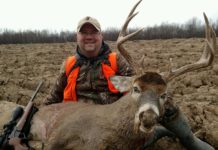

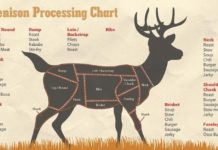
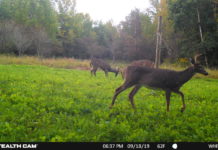














![The Best Deer Camp Chili [VIDEO] Deer Chili Ingredients, Tomatoes, Chili Spices](/wp-content/uploads/2015/10/Deer-Chili-Deer-Camp-Recipe-218x150.jpg)
![How to Call Elk Early in the Season [VIDEO]](/wp-content/uploads/2016/08/byers003-218x150.jpg)

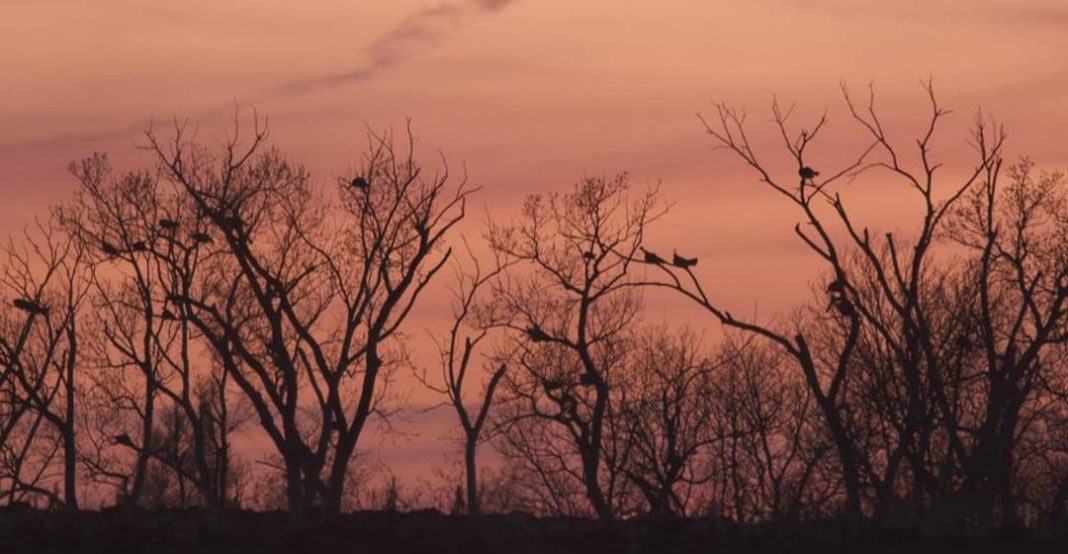


![Idiots Disturb Hunter: How Would You Have Handled It? [VIDEO]](/wp-content/uploads/2015/10/DSC00110-e1474487693878-100x70.jpg)
![Albino Buck Shocked to Shed His Antlers [VIDEO]](/wp-content/uploads/2015/10/AlbinoDeer-100x70.jpg)